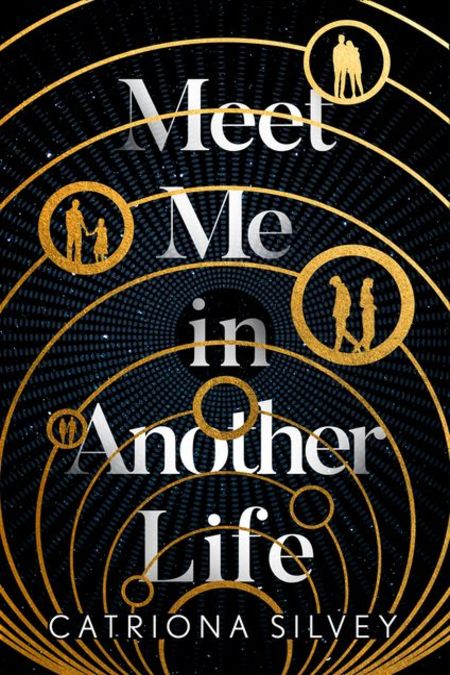Some bonds can never be broken it seems.
In the mysterious perfection of Catriona Silbey’s Meet Me in Another Life, we are given devastatingly powerful insight into how some connections are so strong and unyielding that they persist in the face of every challenge or obstacle they encounter.
To begin there is a delicious sense of mystery and wonder about how Thora and Santi keep coming together over and over again, bound together in ways that neither initially appreciates and then understands.
In life after life they find themselves in the city of Cologne, sometimes as lovers, other times as friends or colleagues and occasionally as enemies; each time however they have a niggling sense that they know each other from somewhere though neither Thora nor Santi is entirely sure where or how.
One thing that is certain as this wondrously well-told book goes on is that something highly unusual is uniting Thora and Santi together, something so relentlessly powerful that despite their best attempts to evade it or ignore it, it keeps asserting itself over and over.
The two react in entirely different to this prevailing existential mystery.
Thora is the irreligious sceptic, the one who says it all means nothing, that there is no rhyme or reason to it and they best accept the accidental chaos; by way of stark contrast, Santi or Santiago, believes very much in God and fate, that there must be purpose and meaning to what’s going on even if he’s not sure what that is precisely.
“He’s never called her by her first name before. Not in this life. Thora meets his eyes. She doesn’t see her colleague, the partner she fell in with so easily that Lily joked they must have known each other in a past life. She sees her teacher, her student, her brother, her husband, her father: a vortex of realities spinning and collapsing together.” (P. 141)
Quite where they meet when their respective positions are so widely divergent might be a troubling conundrum save for the fact that whatever is at work here keeps taking care of it for them.
They are thrown together again and again in ways that force them to finally confront the fact that their lives are not like those of the people around of them and that while their lovers, family members and friends may recur, they seem to be in a whole other universe to Thora and Santi.
But what is that exactly?
It is the overpowering mystery that drives Meet Me in Another Life which balances with a breathtakingly adeptness that will keep you deeply and wholly engaged throughout the overarching “what ifs” and whys” with the simple forward momentum of life for Santi and Thora which always changes but remains stubbornly and bewilderingly the same in many key respects.
It’s the pervasive emotional resonance that suffuses the novel and ensures that what some dismiss as a quirky premise carries with a great weight and substance adds real profundity to a book already rich in so many other things.
Key, of course, to the compelling readability of Meet Me in Another Life is the intertwining relationship between Thora and Santi, which comes vividly and vibrantly alive with exquisitely well-wrought characterisation.
Silvey writes with the eye of someone who well understands the human condition and the way in which we all find ourselves, even if we are not in the same strange place at Thora and Santi, wondering if we are really living the life we are meant to or wanted to.
Granted, it’s highly unlikely any of us find ourselves meeting the same person over and over in different guises and relationship, but we can all relate to that sense that life hasn’t quite lived up to expectations and that there’s a vague sense that there should be more.
Quite what that is is another thing entirely for almost all of us but for Thora and Santi it emerges over multiple lifetimes that who they are and what they could be have manifested themselves in just about every way possible.
There’s no real mystery of who they are, to themselves or each other on one level, and yet there is still a nagging sense of why this is all happening and a deepening, ever more unsettling sense that time is running out to get to the bottom of it all.
Neither of them is quite sure why they feel that but as the reality around begins to show signs of buckling and bending, the race is on to figure out the great mystery of why it is that Thora and Santi can never seem to escape each other, in this or any other life.
“She follows the trail of paintings up the stairs. Some lives show up again and again; the pair of them in their police uniforms, fireworks bursting around their heads; the life where they were adopted twins, Thora underwater, Santi reaching to grab her heel; two students at the top of the tower, looking up at the bewildering stars. One wall shows their parents, Thora’s sharply observed, Santi’s more impressionistic, as it is easier for them to capture what he is less close to. On the opposite wall, their other constants: Lily and Jaime and Aurelia, Heloïse and Jules. Thora slides past them with a kind of vertigo, not daring to meet their eyes.” (PP. 234-235)
Meet Me in Another Life is a remarkable piece of storytelling.
Buoyed by sparkling writing, rich characterisation and a narrative that deftly weaves between the known and the unknowns, the novel is a superb piece of writing that maintains an intriguing sense of mystery while advancing the relationship between Thora and Santi who begin, bit by tantalising bit, to stitch together why this strangest of existential even as they struggle with what it means to be them in the here and now.
Well, at least the here and now that’s evident right now, in every chapter that sense of the present shifts in ways big and small, undermining any ability either of then to make their peace with it.
The great beauty and insight of Meet Me in Another Life, which comes with a brilliantly clever and profoundly poignant ending that more than delivers on the nuanced and thoughtful book-long set-up, is that it acknowledges the great yawning divide between what we are and wish we were.
In the case of Thora and Santi in manifests in ways both magical and banal, but the net effect is the same for them and for all of us – finding out who we are and reconciling that with the thousand lingering alternatives that gnaw at the edges of our hearts and minds, can become all consuming, and while the end point for the two compelling characters is a thing of great imagination and raw humanity, it’s something we must come to terms with if we are to ever find our peace, any peace, with this thing called life.

